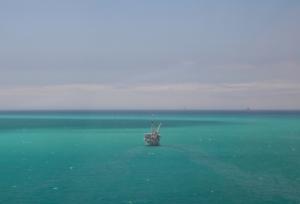Content:
UCSB's Debora Iglesias-Rodriguez is thrilled to study the chalk-making phytoplankton turning the ocean turquoise in the Santa Barbara Channel. What makes these otherwise invisible life forms suddenly visible? It's their sudden abundance. When coccolithophores are numerous, they turn the ocean surface turquoise-white and can easily be seen via satellite.
"Coccolithophores make chalk -- calcium carbonate -- internally in the organelles within the cell and they push it outside the cell membrane," said biological oceanographer Debora Iglesias-Rodriguez, a professor in UCSB's Department of Ecology, Evolution and Marine Biology. "They contain a material that glues the chalk plates to the membrane of the cell, and as they make more, they shed the plates so we get these white tides."


